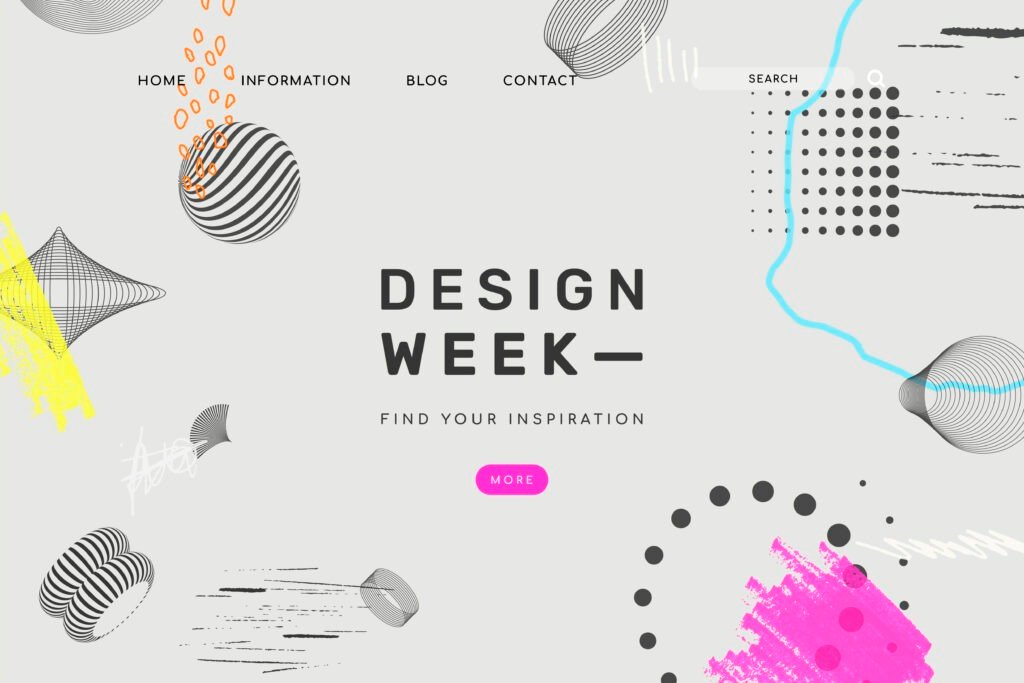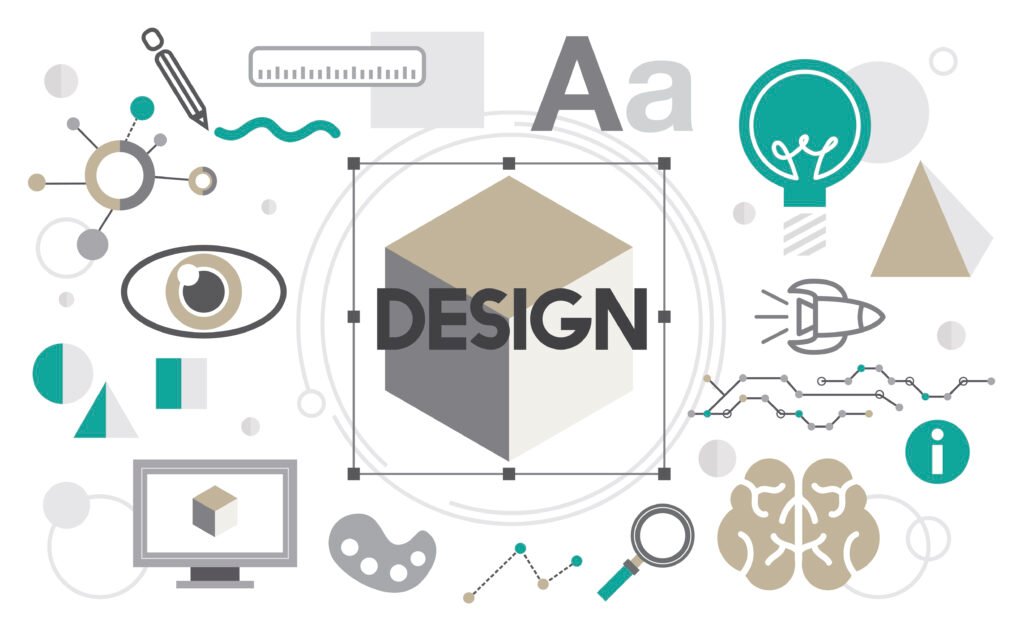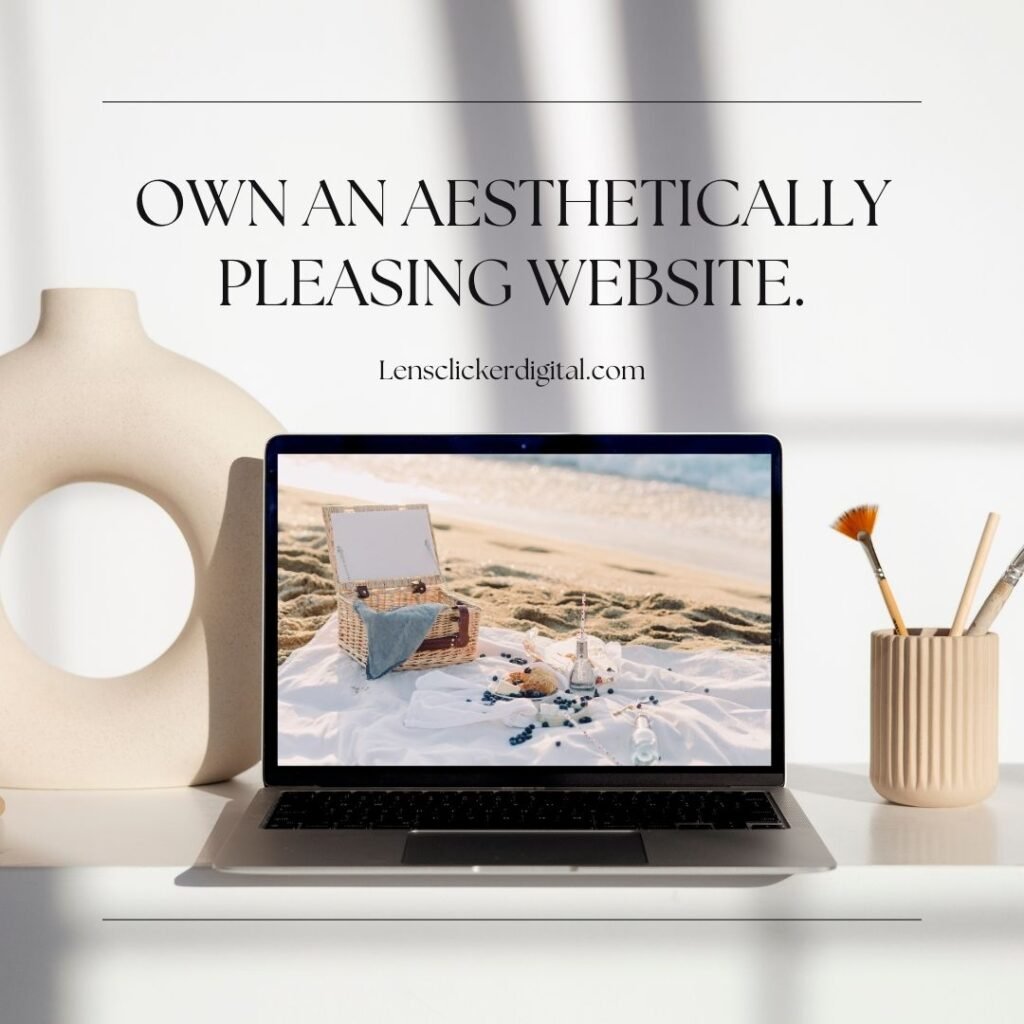Discover the Hottest Graphic Design Trends for 2024
As we edge closer to 2024, the dynamic world of graphic design continues to evolve, presenting new norms and expectations in the creative industry. With the relentless pace of technology and cultural shifts molding the landscape, staying abreast of the latest graphic design trends 2024 becomes not just a matter of relevance, but of necessity for designers aiming to remain at the forefront of innovation. The importance of incorporating contemporary graphicdesign ideas into one’s work cannot be overstated, as these trends often reflect broader societal movements and technological advancements, making themessential for producing the best graphic design work that resonates with modern audiences.
This article delves into the hottest graphic design trends 2024, offering a glimpse into the future of creativity in the digital age. From AI-enhanced design that merges the boundary between human creativity and machine precision, to 3D Hyper-Surrealism that defies traditional perceptions of space and form, each trend represents a significant shift in how designers approach their craft. Also covered are Retro Pixels, which nod to nostalgia with a modern twist, Inclusive Visuals that celebrate diversity, and Experimental Typography that pushes the confines of text. Additionally, Nature-Inspired Aesthetics and High Contrast and Bold Typography are examined for their ability to connect with viewers on a visceral level, showcasing the evolving landscape of modern graphic design.These insights provide valuable guidance for designers looking to infuse their projects with fresh, innovative ideas that align with the latest industry standards.
AI-Enhanced Design

AI-Enhanced Design Overview
AI-enhanced design is revolutionizing the graphic design industry by integrating advanced algorithms and machine learning techniques. These tools enable designers to create more precise, efficient, and innovative visuals. AI has dramatically altered design processes across various domains including graphic, motion, web, and UX/UI design, making it a crucial component in modern creative workflows.
AI-Enhanced Design Tools
A plethora of AI design tools are reshaping how designers work. Tools like Adobe Photoshop have incorporated AI features such as advanced denoise capabilities, while platforms like Jasper.ai and DALL•E 3 offer comprehensive AI solutions that generate new content like images and logos. Other tools, including Canva and Khroma, enhance the graphic design process with AI-powered features like generative image fills and automated color palette generation. These tools not only streamline workflow but also open up new avenues for creative expression and innovation.
AI-Enhanced Design Benefits
The integration of AI into graphic design brings numerous benefits. It automates repetitive tasks, saving time and reducing manual effort, which allows designers to focus more on creative aspects. AI tools provide a high degree of customization and control, enabling designers to experiment with different styles and visual concepts quickly and efficiently. Moreover, AI-enhanced tools can analyze data and trends to deliver insights that inform design decisions, ensuring that outputs are not only creative but also strategically aligned with market demands and consumer preferences. These capabilities significantly enhance productivity and broaden the scope for creative exploration, making AI an invaluable ally in the graphic design field.
3D Hyper-Surrealism

3D Hyper-Surrealism Explained
3D Hyper-Surrealism distorts reality by blending elements of the familiar with the fantastical. This style manipulates shapes, textures, and perspectives to create scenes that defy logic and ignite the imagination. One of its defining features is the use of hyper-realistic rendering techniques, where artists achieve a level of realism that borders on photography. Every detail, from cracks to reflections and shadows, is meticulously crafted to immerse the viewer in a world both familiar and uncanny. Moreover, this trend exaggerates proportions and distorts scale, amplifying elements to evoke powerful emotional responses and challenge perceptions of space and dimension.
3D Hyper-Surrealism Applications
The applications of 3D Hyper-Surrealism extend beyond traditional media. With the rise of immersive technologies like virtual reality (VR) and augmented reality (AR), viewers can now step directly into these surreal worlds. This interactivity allows for unprecedented engagement with the artwork, blurring the lines between the virtual and the real. These technologies enhance the immersive experience of 3D Hyper-Surrealism, inviting viewers to explore deeper layers of meaning within the art, whether it’s a commentary on nature, human psyche, or the intersection of technology and society.
3D Hyper-Surrealism Impact
3D Hyper-Surrealism significantly influences brand design, pushing it towards imagined lush, opulent worlds rich in detail. This style includes abstract and organic shapes, vibrant colors, and experimental fonts, making it ideal for delivering otherworldly experiences while remaining customer-focused. The movement’s roots in changing perceptions through dreams and the unconscious mind reflect its deep impact on modern graphic design, allowing brands to explore more experimental and ornate typography. This trend is not only about aesthetic innovation but also about engaging consumers on a moreprofound, emotional level.
Retro Pixels

Retro Pixels Comeback
Retro Pixels have surged back into the limelight, capturing the hearts of both creators and consumers with their nostalgic charm. This resurgence is prominently seen in platforms like Threadless’s vibrant marketplace, where the pixel art style reminiscent of early video gaming days makes a striking comeback. Initially born out of necessity during the technical limitations of the late 1970s and early 1980s, iconic games like Space Invaders and Pac-Man utilized pixel art to create engaging visuals despite the era’s graphic constraints. Today, this style is celebrated not just for its historical significance but also for its simplicity and unique aesthetic that stands out in the modern digital landscape.
Retro Pixels in Branding
In the realm of branding, Retro Pixels offer a unique blend of old-school charm and modern design sensibilities. This trend is not just about revisiting the past but redefining it with a contemporary twist. Brands are increasingly integrating Retro Pixels to evoke nostalgia while maintaining a fresh and appealing visual identity. This approach has proven effective across various digital media, from video games to web design, where Retro Pixels serve as a distinctive tool to enhance user engagement and stand out in a competitive market.
Retro Pixels Appeal
The appeal of Retro Pixels lies in their ability to strip back complexity and focus on the basics, offering a refreshing break from the often overwhelming hyperrealistic visuals of today’s media. It’s a celebration of the past, leveraging fond memories of the early days of video gaming to create a sense of familiarity and comfort. Moreover, Retro Pixels spark the imagination, allowing designers and artists to explore new creative possibilities within the constraints of pixel art. This style encourages the creation of new worlds, characters, and stories, all within the nostalgic yet innovative framework of pixel art. Additionally, the fusion of Retro Pixels with modern graphic elements leads to a dynamic design trend that offers endless possibilities for creative expression, making it a pivotal element in the graphic design trends of 2024.
Inclusive Visuals

Inclusive Visuals Importance:
Inclusive visuals play a pivotal role in modern graphic design by ensuring that digital experiences are accessible and engaging for a diverse audience. This approach not only enhances usability but also fosters a more equitable digital space. By prioritizing accessibility, inclusive design ensures that no information is lost for users who rely on assistive technologies such as screen readers, voice recognition software, or alternative input devices. Furthermore, inclusive visuals resonate deeply with viewers as they see themselves reflected in the designs, fostering a sense of belonging and strengthening consumer loyalty.
Inclusive Visuals Examples:
The power of inclusive visuals is evident in various successful implementations across the industry. For instance, major brands like Apple and Google have expanded their emoji libraries to include a wider range of skin tones, genders, and physical abilities, reflecting a broader spectrum of humanity. Additionally, companies like Slack and Netflix have been recognized for their efforts in promoting inclusivity through their branding and media content. Slack utilizes illustrations that represent people of all ages, shapes, and sizes, while Netflix has been praised for its detailed closed captions that enhance the viewing experience for those with hearing impairments.
Inclusive Visuals Implementation:
Effective implementation of inclusive visuals involves several key practices. Designers are encouraged to engage in comprehensive research and empathize with their target audience to understand their diverse needs and preferences. This can include user testing with diverse groups to identify and rectify any potential biases or misrepresentations. Moreover, embracing flexibility in design allows for a broad spectrum of individual preferences and abilities to be accommodated, ensuring that everyone can interact with the content in a way that suits them best. This might involve adjustable text sizes, multiple navigation methods, and content customization options such as color scheme adjustments for better readability.
Experimental Typography

Experimental Typography Trends
2024 is witnessing a surge in the use of bold and experimental fonts, which are making a significant impact across various branding platforms. These fonts range from quirky and playful to bold and impactful, enabling brands to distinguish themselves in a competitive market. Notably, 3D and interactive elements in typography are gaining popularity, adding depth and dimension to text, thus making it more engaging for viewers. This trend leverages technological advancements to create dynamic and interactive typography that responds to user interactions, providing a truly immersive experience.
Experimental Typography Techniques
The versatility of variable fonts is transforming typographic design by allowing adjustments in weight, width, and other attributes dynamically, enhancing both the visual appeal and functionality of digital experiences. Kinetic typography is adding depth and personality to textual content, with its ability to include subtle interactions or bold animations, enriching the user interface design. Custom typography is also pivotal, as it allows brands to express their unique identity and values through tailored design choices, ranging from whimsical to sophisticated styles. Additionally, the integration of augmented reality (AR) with typography offers new avenues for interactive storytelling, blending digital text seamlessly into the physical environment.
Experimental Typography Showcase
The exploration of variable fonts is exemplified by new typefaces like Calleo Sans and Calleo Flux, which are designed to be highly adaptable and expressive, challenging traditional static typography norms. Another innovative creation is Bubble Dreams, a font that transports users to a fairy-tale world with its playful, bubble-like letterforms adorned with sweet bow illustrations, ideal for projects requiring a touch of whimsy and charm . Similarly, Solarium, inspired by celestial bodies, uses light and shadow to enhance legibility and aesthetic appeal, offering multiple variations for designer flexibility. The GoogieType typeface reflects the mid-20th-century Googie architecture, characterized by its bold and futuristic style, suitable for nostalgic yet modern designs.
These trends and techniques in experimental typography are not just about aesthetic innovation but are crucial for engaging consumers on a deeper, more emotional level.
Nature-Inspired Aesthetics

Nature-Inspired Aesthetics Overview
Nature-Inspired Aesthetics in Design
Nature-Inspired Aesthetics Impact
High Contrast and Bold Typography

High Contrast Typography Basics
High contrast typography is essential for creating visually appealing and readable text. It utilizes varying font weights and color contrasts to draw attention and guide the reader’s eye through the content. Key techniques include using bold fonts for headings to differentiate them from body text and employing color contrasts to ensure text stands out against its background, enhancing legibility. The strategic use of contrast helps maintain a cohesive and reader friendly design, making it a fundamental aspect of effective typography.
Bold Typography Techniques
Bold typography is characterized by strong, substantial letterforms that make a statement and convey strength. This style is not just about aesthetics but also about functionality, as it improves readability and viewer engagement. Techniques involve using chunky, heavy fonts that create visual impact and are particularly effective in headlines and logos. The use of irregular shapes, exaggerated proportions, and playful ornaments are common in bold typography, adding dynamism and energy to the design
High Contrast and Bold Typography Examples
The combination of high contrast and bold typography is widely used in various design projects to create a powerful visual hierarchy. For instance, dramatic festival posters often employ high contrast backgrounds paired with bold typography to capture attention. Similarly, brands like Nike use bold typefaces with contrasting backgrounds in their campaigns to create impactful visuals that resonate with viewers. This approach is also prevalent in web design, where bold headlines against contrasting backgrounds immediately engage visitors.
Conclusion
Graphic Design Services at LensClicker Digital
At LensClicker Digital, our Graphic Design agency is dedicated to transforming your ideas into visually stunning realities. We specialize in creating compelling social media graphics, branding elements, and marketing materials that not only capture attention but also drive engagement and conversion.
Our team of talented designers combines creativity with strategic thinking to deliver designs that communicate your brand’s message effectively. Whether you need eye-catching graphics for social media campaigns, professional logos, or cohesive brand identity packages, LensClicker Digital is your go-to partner.
We understand the importance of visuals in today’s digital landscape, and we ensure that every design we produce is tailored to your specific needs and objectives. Our goal is to help your brand stand out in a crowded market and connect with your audience on a deeper level. Choose LensClicker Digital for innovative graphic design solutions that elevate your brand and leave a lasting impression.
